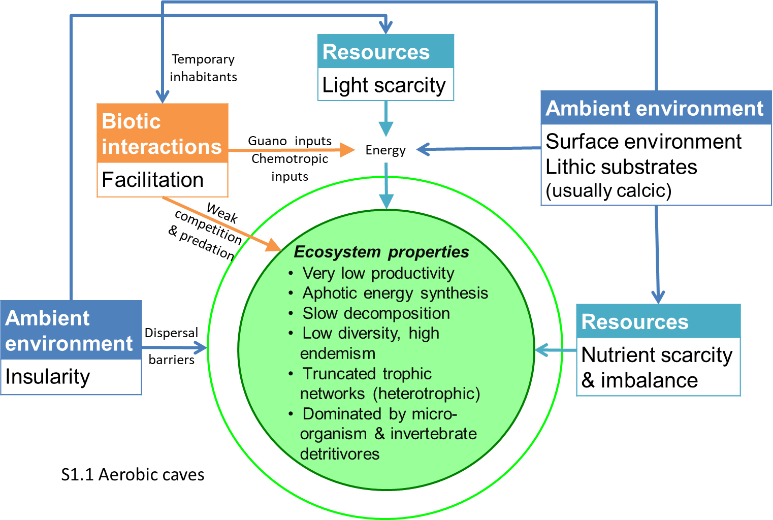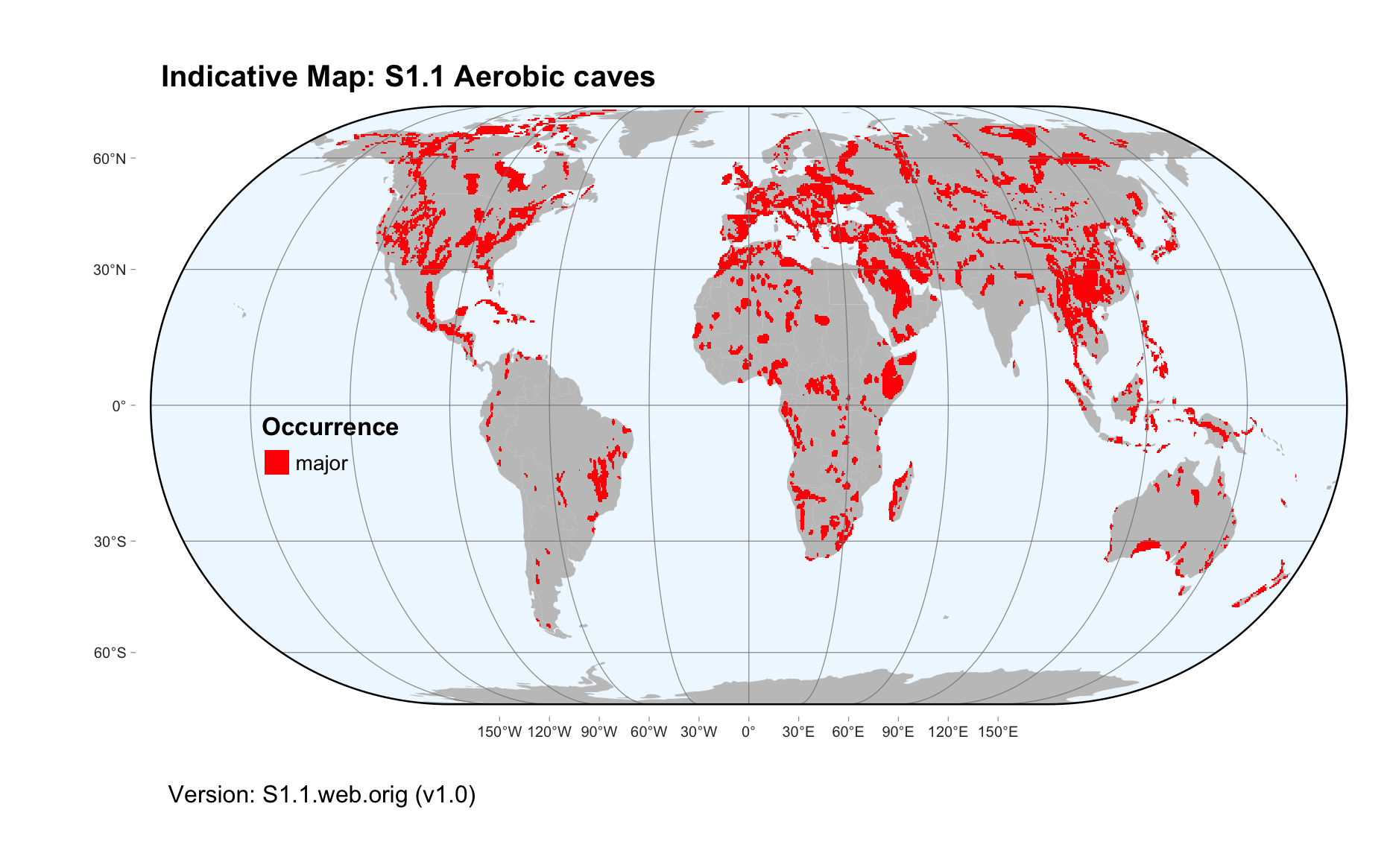Global ecosystem typology
Alternative site for the Global ecosystem typology with additional information for ecosystem profiles and indicative maps.
This site is maintained by jrfep
S1.1 Aerobic caves
Biome: S1. Subterranean lithic biome
Contributors:
(texts)
These air-filled voids beneath the ground are simple low-productivity ecosystems limited by an absence of solar energy, except around their openings to the surface. Food chains consequently lack plants and herbivores. Microbes in biofilms are the dominant life forms, but some caves have invertebrate detritivore and predators, or temporary vertebrate inhabitants. Their limited energy comes from organic material imported by seepage or animal movements, and bacteria that synthesise chemical energy from rocks. They are found on all major land masses, most commonly in carbonate rocks or lava tubes.
Key Features
Dark dry or humid geological cavities with microbial chemoautotrophs, detrivores, decomposers, endemic invertebrates & no photoautotrophs.
Overview of distribution
Scattered globally throughout land masses.
Profile versions
- v1.0 (2020-01-20): DA Keith
- v2.0 (2020-06-04): DA Keith; GC Hose
- v2.01 ():
- v2.1 (2022-04-06): DA Keith; GC Hose Full profile available at official site
Main references
Selected references for this functional group:
Gibert J, Deharveng L (2002) Subterranean ecosystems: a truncated functional biodiversity BioScience 52, 473-481 DOI:10.1641/0006-3568(2002)052[0473:seatfb]2.0.co;2
Engel AS (2010) Microbial diversity of cave ecosystems Geomicrobiology: Molecular and environmental perspective (Eds. LL Barton, M Mandl, A Loy), pp219-238. Springer, Dordrecht
Diagrammatic assembly model

Maps
Maps are indicative of global distribution patterns are not intended to represent fine-scale patterns. The maps show areas of the world containing major (coloured red) or minor occurrences (coloured yellow) of each ecosystem functional group. See general notes on maps.
There are 2 alternative versions of the indicative map for this functional group, please compare description and sources below.
S1.1.IM.orig_v1.0
Datasets
- Carbonate-rocks-3.0
Map references
Williams P, Ting Fong Y (2016) World map of carbonate rock outcrops v3.0 The University of Auckland, Auckland. Webpage
S1.1.web.orig_v1.0

Datasets
- Carbonate-rocks-3.0
Map references
Williams P, Ting Fong Y (2016) World map of carbonate rock outcrops v3.0 The University of Auckland, Auckland. Webpage
Check: the Glossary / Profile structure / the public document